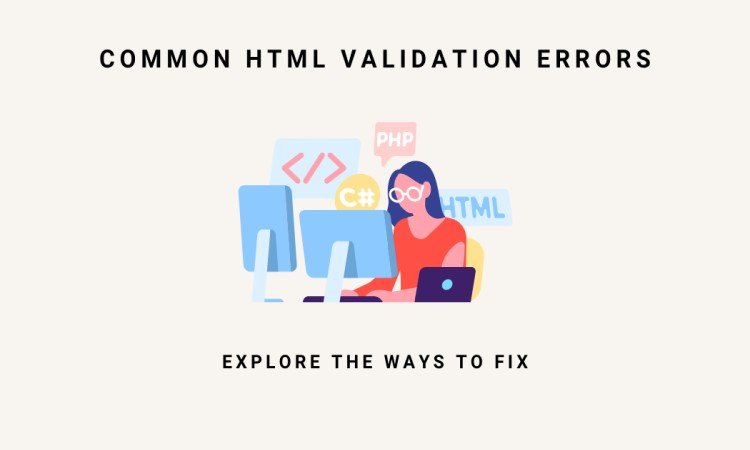Table of Contents
If you want to ensure that your website is accessible and user-friendly, you should start thinking to use the HTML validator code. This code helps to ensure that your website is error-free and complies with the standards of the World Wide Web Consortium (W3C).
In this blog, you will learn what the HTML validator code is and how to use it to fix common HTML validation errors on your website. Additionally, we’ll also discuss the importance of fixing these errors to make the website accessible to all your users.
What is HTML Validator Code?
HTML validator code is a tool that checks the HTML code of your website for errors and inconsistencies. It helps to ensure that your website complies with the standards set by the W3C, which is an international community that develops web standards.
The HTML validator code checks the HTML code of your website against a set of rules and provides a report of any errors or warnings that it finds. This report can help you identify and fix errors in your code, making your website more accessible and user-friendly.
Related: Fix Duplicate Content Issues on Your Website
How to Find Common HTML Validation Errors on Your Website
Before we discuss how to fix HTML validation errors, let’s take a look at some of the common errors that you might encounter.
Here are some of the most common HTML validation errors:
- Missing or incorrect doctype declaration
- Missing or incorrect character encoding
- Missing or incorrect meta tags
- Improper use of HTML elements
- Missing or incorrect attribute values
To find these errors, you can use an HTML validator tool. There are many free HTML validator tools available online, such as the W3C HTML validator and the HTML Validator by CSE HTML Validator.
Simply enter the URL of your website into the validator tool and it will generate a report of any errors or warnings that it finds.
Also read: Fix MySQL Port Conflict Issue on XAMPP
How to Fix Common HTML Validation Errors on Your Website
Now that you know how to find HTML validation errors on your website, let’s discuss how to fix them.
Here are some tips for fixing common HTML validation errors:
1. Missing or incorrect doctype declaration
Ensure that your web page starts with a valid doctype declaration. You can find a list of valid doctype declarations on the W3C website.
2. Missing or incorrect character encoding
Make sure that your web page uses a valid character encoding, such as UTF-8 or ISO-8859-1. You can specify the character encoding in the meta tags of your web page.
3. Missing or incorrect meta tags
Add meta tags to your web page to provide information about the page, such as the title, description, and keywords.
4. Improper use of HTML elements
Ensure that you are using HTML elements correctly.
For example, use the correct element for headings, paragraphs, and lists.
5. Missing or incorrect attribute values
Make sure that you are using correct attribute values for HTML elements.
For example, use the correct values for the “alt” attribute of images and the “href” attribute of links.
Related: Fix the Pagination Issue or 404 Page
Importance of Fixing The HTML Validation Errors on Your Website
Fixing HTML validation errors is important for the following reasons:
- It ensures accessibility for all users, including those with disabilities who rely on assistive technologies.
- It helps to improve search engine rankings by making your website readable and understandable to search engines.
- It improves the overall user experience of your website, leading to higher engagement and conversion rates.
To fix HTML validation errors, you can use online validators such as the W3C Validator or HTML5 Validator. You can also use text editors or content management systems that provide HTML validation tools.
Regularly checking and fixing HTML validation errors can help improve the overall quality of your website and ensure that it remains accessible, search engine friendly, and user-friendly.
Also read: Top 8 Website Accessibility Tools
Conclusion
In conclusion, HTML validation code plays a critical role in ensuring the accessibility, search engine friendliness, and user-friendliness of your website. By using an HTML validator tool, you can easily identify and fix common HTML validation errors on your website. By doing so, you can improve your website’s functionality, user experience, and ultimately, achieve your business goals.
Remember that fixing HTML validation errors is an ongoing process, and it’s important to regularly check and fix any new errors that arise. By staying on top of your website’s HTML validation, you can ensure that your website remains accessible, search engine friendly, and user-friendly for all visitors.



